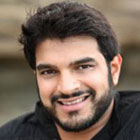
Coaching: Leading from Beside
Coaching is good for you.
Think back to the people in your life who you’ve advised, whose potential you’ve recognized, and whose talents you’ve used to help you discover and shape your own.
Didn’t that process feel good?
According to research by Harvard Business Review, coaching others has positive psychophysiological effects that restore the body’s natural healing processes and improve stamina. “When we care enough to invest time in developing others, we become less preoccupied with ourselves, which balances the toxic effects of stress and burnout.”
Great leaders are part coach, part communicator, part motivator and always in service of the team they lead. It’s never about them, but rather about the people they serve.
Great coaches model growth and lead beside a person. Great coaches first become clear and vulnerable in their own leadership practice to be able to share where they get stuck. This builds trust through authentic connection.
Vulnerability requires constant self-reflection. Consider how you inspire, how you challenge, and what actions, emotions and characteristics you lead with.
Ask yourself:
- Am I open to authentically connect to the person I am about to coach?
- Am I willing to have challenging conversations about goal achievement without making things personal?
The goal of coaching is to provide “Interactions that help the coachee expand awareness, discover creative solutions and implement better decisions,” –Jack Zenger. In order to free up a client to take new action, coaches must first be very clear with themselves by asking:
- How do I routinely expand my awareness and my ability to see clearly?
- Where can I remove barriers in my own perspective so I can be present to listen first and respond effectively with great questions?
- What new creative approaches to problems can I share?
A great coach isn’t solving on behalf of the coachee, but serves as a facilitator of self-reflection and creative problem-solving. So, a coach needs to first be very clear about their own current leadership stance.
After building and exercising a routine of self-reflection for personal clarity, the next step is to determine the purpose of the coaching conversation. Is the goal of the discussion for short-term performance improvement or long-term career development? Both are crucial, but each requires a different strategy.
Coaching for Now
In a performance conversation, questions should be directed to getting the coachee to see the importance and urgency of the recent lack of performance. Then, guide him or her to better solutions that propel better results. As a rule of thumb, avoid ‘Why’ questions, these don’t fuel productive or future-oriented conversations.
Step 1: Understand. When you start a coaching conversation about recent performance, begin by getting aligned so you’re on the same page about the importance and urgency of the matter. Here are some retrospective questions to use:
- How do you think your performance impacted the project?
- In what ways do you think your performance might have hindered progress?
Allow the coachee to answer free. If you and the coachee don’t see the issue with the same urgency, be assertive and ask questions to help him see the role of his work in the context of the organization.
Step 2: Push. Halfway through the conversation, pivot to start challenging him to take responsibility going forward.
- What can you do better to propel progress for the team / project?
- What are completely new ways to get results faster?
- In what ways do you need to develop to improve productivity?
- Who else could help you where you aren’t strong?
Step 3: Encourage. Toward the end of the conversation, ensure the coachee feels positive and supported by your efforts to hold him or her accountable for action.
- How often shall we check in to make sure we are on track?
- How else can I best support you to ensure performance has improved?
Coaching for Later
To balance out short-term performance improvement, a coaching conversation about a person’s career is vital. In this type of conversation, use questions that focus on intrinsic motivation and practical skill development.
Step 1: Open by asking some questions that make the coachee think about his or her values and how they see themselves as a growing leader:
- What types of work motivate you?
- What type of work are you willing to lose sleep over?
- What impact do you want to make in this company? In the world?
Step 2: Focus on what he’s already great at and extend the application of those strengths to new responsibilities by asking:
- What work is easy for you to accomplish?
- What strengths do you lend to a team?
- Where else do you want to apply your strengths in this company?
Step 3: Commit to next steps on developing capacity and experience that activate both strengths and motivation for the individual by asking:
- What projects excite you that you wish you were a part of?
- What type of role can you see yourself having on this project?
- What are some ways you can develop strengths in your current role before moving to the next role?
Bottom line: effective coaching starts with a clear coach. Whether you’re coaching for immediate performance improvement or long-term career development, always keep in mind that a coach’s job is to lead from beside, not above.


Uncommon Person: Chad Hutson

Our Internal Learning & Impact at Bulldog Drummond

The One Decision by Employers in 2021 that Means Everything

What I Wish I Knew

Standing Up Inside

Uncommon Person: Gregg Imamoto

Five Things Every Company Should Know about ESG

Redefining Value

Uncommon Person: Chris Baréz-Brown

It’s Time For A Whole Lotta Common Good

Did You Choose Humanity?

Uncommon Partnership: Violux

Here’s How

Uncommon Person: Santhosh Nair

Designing Strategy For A Complex World

Responsibility & Relevance for Brands

